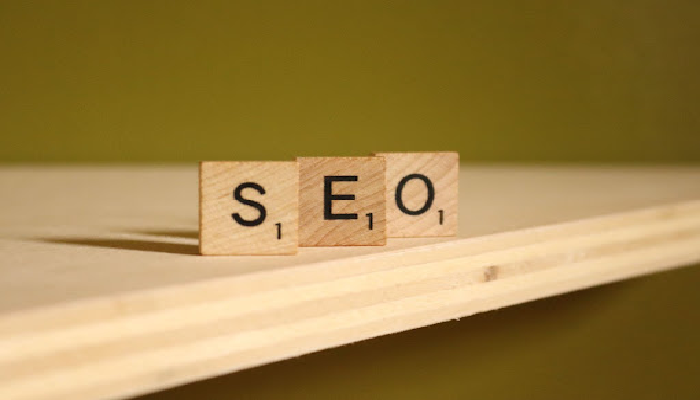Digital marketing practices are becoming highly popular in recent times as a vast number of businesses rely on these methods to promote their products and services. It has opened up new opportunities for organizations to connect with their audience and work on establishing themselves in a competitive industry.
The two most common types of digital marketing taken up by businesses are SEO and SEM. Both these practices rely on generating web traffic toward a brand and attracting new leads. They can often work hand in hand to get positive results for a business and help them achieve its targets. Based on a brand’s needs, using SEO and SEM practices efficiently can push companies to take up informed marketing practices and take advantage of these two resources to achieve the desired results.
What is SEO?
SEO refers to Search Engine Optimization. It is a highly efficient way for businesses to garner organic reach online, mainly through Google search queries. SEO marketing aims to create high-ranking results that will allow a brand’s content or website to rank higher for specific search results that may or may not be interconnected with one another. It targets organic visibility and helps businesses reach a vast audience base.
What is SEM?
SEM or Search Engine Marketing relies on paid advertisements that one can come across on the first result page of a Google search query. These adverts are often displayed on top or at the side of other search results, giving related solutions to users based on what they are looking for. In the case of SEM, businesses can pay a certain fee to ensure that their ads are displayed at the top of different related search results.
8 Prominent Differences Between SEO and SEM You Should Know
- Different Result Targets
While SEO and SEM both focus on generating web traffic, they have varying targets to generate results. In the case of SEO, businesses have to create SEO-friendly content or websites with the help of high-ranking titles, keywords, website speeds, mobile-friendly sites, and more. All these factors influence how much organic reach a brand can attract to their work. In the case of SEM, there is a greater focus on paid ads, which can be for search results or shopping queries. These ads serve as a quick getaway for instant direction from a search page to the brand’s website or application.
- SEO Takes Longer Compared to SEM
Because SEO focuses on bringing in organic results, it does take time to deliver the results that a business wants. It can take weeks to months to achieve desired SEO results, which is why organizations must have an SEO strategy to implement their work. On the other hand, SEM is quicker as it can deliver results within hours. Brands can have instant traffic to their website once the paid ads on different platforms go live.
- SEO is Costlier in the Short Term
SEO can be expensive for brands to implement at the start due to the efforts and strategies needed to deliver high-quality results. Businesses may also require additional staff who specialize in SEO practices, which may add to previous expenses. However, the practice is promising, making it a worthy investment provided brands give it their best efforts. SEM is relatively cheaper as it is a quick process with almost instant solutions. Companies that get the work done in-house without needing additional hires help save on different expenses.
- Large-Scale Operations Vs. Small-Scale
It is beneficial for growing businesses to invest in SEO practices to attract more customers to their work. SEO is a practice that is more suitable for small-scale businesses that want to expand their online reach. SEM is highly ideal for large-scale, established organizations with an audience. Pay ads can instantly reach these target groups, thus allowing businesses to attract traffic immediately.

- Future Benefits
SEO can potentially deliver long-term benefits and can generate leads even after a significant time. When implemented well, search queries will rank SEO content higher as it is more relevant to the search algorithm. SEM, on the other hand, delivers short-term results. Businesses may have to invest in new paid ads periodically to generate different results based on their operations and needed traffic for a better customer experience.
- Keyword Use
SEO offers brands a vast keyword opportunity as it can use a combination of different, relevant words within a single piece of content that can reflect well in a search engine algorithm. SEM is comparatively restricted on that front, as all content must be precise with limited keyword use for the paid ads to deliver instant traffic towards a brand while ranking high for different search queries.
- Click-Through Rates
SEO has the potential to deliver higher click-through rates as many people choose to click on the content they feel will be informative to them. Websites and online blogs with SEO-friendly content will see higher click-through rates as they can promise customers what they need with a single click. SEM, however, has a lower CTR as ads do not always provide users with the push they need to make a click. They can be a hit or miss, which is why companies need a reliable SEM strategy that consistently brings in reasonable click-through rates.
- Website Testing
For businesses looking to test out the visibility of their website, SEM offers better results as it is quick with traffic generation through ads. SEO focuses on organic reach, which usually takes time to show results, making it less suitable for brands to test if their website is performing well initially.
Why Do eCommerce Businesses Need Both SEO and SEM?
Even though there are differences between the two practices, combining both forms a healthy marketing strategy that more businesses need to tap into. Here’s why taking up both can prove to be beneficial.
- SEO and SEM target web traffic, which is crucial for building a brand’s online presence. With a high traffic inflow, businesses can reach global audiences, leading to a vast customer base.
- SEO and SEM practices help build the brand’s image as it shows audiences how the business sets a tone and expresses its message, which are two key factors that help determine the overall reach.
- With the help of SEO and SEM, businesses can reach different target segments by tailoring relevant content and ads. They can also use these practices alongside other marketing channels, such as email or social media. Businesses can look at ‘what is email marketing,’ and how it can work alongside SEO and SEM and find the best ways to connect the two channels. This allows brands to expand their work and show customers their diverse approach to their operations.
- SEO and SEM practices enable businesses to develop better consumer understanding to curate content that will align with customer needs. It will help brands to grab instant attention, thus leading to higher reach.
Endnote
With a reliable marketing strategy, using SEO and SEM together has benefits. For eCommerce platforms, a healthy mix of SEO and SEM promises short-term and long-term benefits that are crucial for their establishment. With these practices, businesses can attract new audience groups, grow a global reach, and improve their operations to align with their targets. Hence, SEO and SEM are beneficial for eCommerce businesses for healthy long-term growth.
In conclusion, the synergy of SEO and SEM forms the backbone of a robust digital marketing strategy, providing eCommerce businesses with a competitive edge in the online landscape. To fully harness the potential of these practices, it’s imperative for businesses to partner with a competent SEO agency that understands the nuances of both organic reach and paid advertising. The right agency will optimize content for search algorithms and craft effective paid ad campaigns, ensuring a holistic approach to web traffic generation. By embracing the expertise of the finest SEO agency, eCommerce platforms can navigate the dynamic digital marketplace, attracting diverse audience segments and fostering both short-term and long-term growth.
This paragraph reinforces the importance of selecting the best SEO agency to maximize the benefits of SEO and SEM integration. It emphasizes the need for a strategic and knowledgeable partner in digital marketing, aligning well with the overall theme of the article.
